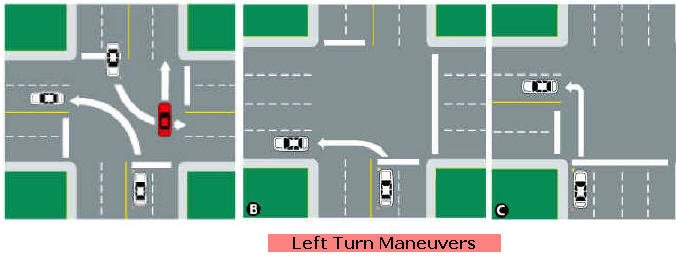When turning left from a three-lane road, it is important to follow proper traffic rules and signals to ensure safety for yourself and other drivers on the road.
When Turning Left From A Three Lane?

In general, in the United States, when making a turn, you are required to complete the turn into the nearest lane available for your turn. However, there are exceptions, such as when turning from a road with multiple turn lanes onto another road; in this case, you must remain in your designated lane.
The primary rule is to avoid crossing lanes while turning. Instead, you should follow an imaginary or marked set of lines that guide you into the appropriate lane from point A to point B. There are also exemptions for oversized vehicles (for wide turns) and a few others, all of which are covered in your state and local traffic laws.
To ensure you are well-informed about these bylaws and road rules, I recommend visiting your local DMV for a comprehensive understanding. The staff there will be more than happy to acquaint you with the relevant regulations and guidelines.
When turning left onto a multi lane road into which lane should the driver turn California?

The approach and execution of a right-hand turn should be as close as possible to the right-hand curb or edge of the roadway. However, there are three exceptions to this general rule:
1. On a three-lane road that terminates at a two-way road, a driver may turn right from the middle lane into any lane lawfully available.
2. When turning right from a one-way road, the driver must adhere to the general rule above for approaching the turn. Afterward, they should complete the turn in any lane lawfully available.
3. On a road with marked lanes specifically designated for right turns, a driver may turn right from any of the marked turn lanes.
Which lane is used when preparing to turn left?
Many roads offer two or more lanes in the same direction. When driving on such roads, slower-moving drivers should utilize the right lane, while the left lane is for faster traffic. It’s essential not to obstruct other vehicles by driving too slowly in your lane, as this can lead to frustration among other drivers or provoke them to make unsafe passing maneuvers.
On two-lane roads, reserve the left lane primarily for overtaking slower vehicles in front of you. Avoid using the left lane when the road is congested and both lanes are in use, especially if you’re driving slower than the rest of the traffic. On roads with three or more lanes, ensure that you match your speed to the flow of traffic in your lane, and be prepared to yield to faster-moving vehicles by moving to the right when necessary.
On multi-lane roads, use the left lane when passing or preparing to turn left, and use the right lane when turning right or preparing to enter or exit the roadway. Avoid overtaking on the right side. Following these guidelines will help ensure safer and more efficient traffic flow on multi-lane roads.
When making a left turn which lane should you turn from Massachusetts?

To execute a left turn safely, follow these steps:
1. Activate your left turn signal before initiating the turn, and begin to slow down.
2. Ensure to look in both directions, thoroughly checking that the oncoming lanes are clear of any approaching traffic.
3. Make the turn from the designated lane, specifically using the left lane for the maneuver.
4. After completing the turn, refrain from entering the right lane. Be aware that in certain states, entering the right lane following the turn is considered illegal.
Can you switch lanes in an intersection California?

Most people commonly believe that changing lanes in an intersection is illegal, but in the California Vehicle Code, there is no explicit prohibition against doing so, making it legally permissible as long as it’s executed safely.
However, it is advisable for drivers to exercise caution and refrain from making lane changes in intersections, particularly in busy areas, to ensure safety.
Regarding Question 2 about receiving a ticket for driving the speed limit in the fast lane, Riverside California Highway Patrol Officer Dan Olivas clarifies that driving at the speed limit would not warrant a citation. Nevertheless, a driver who is impeding traffic can be cited for doing so.
Officer Olivas emphasizes that driving significantly slower than the flow of traffic in the fast lane is not recommended. In such instances, it is best to move over to the right lanes, allowing faster vehicles to pass safely. Holding up other cars and frustrating fellow drivers should be avoided.
